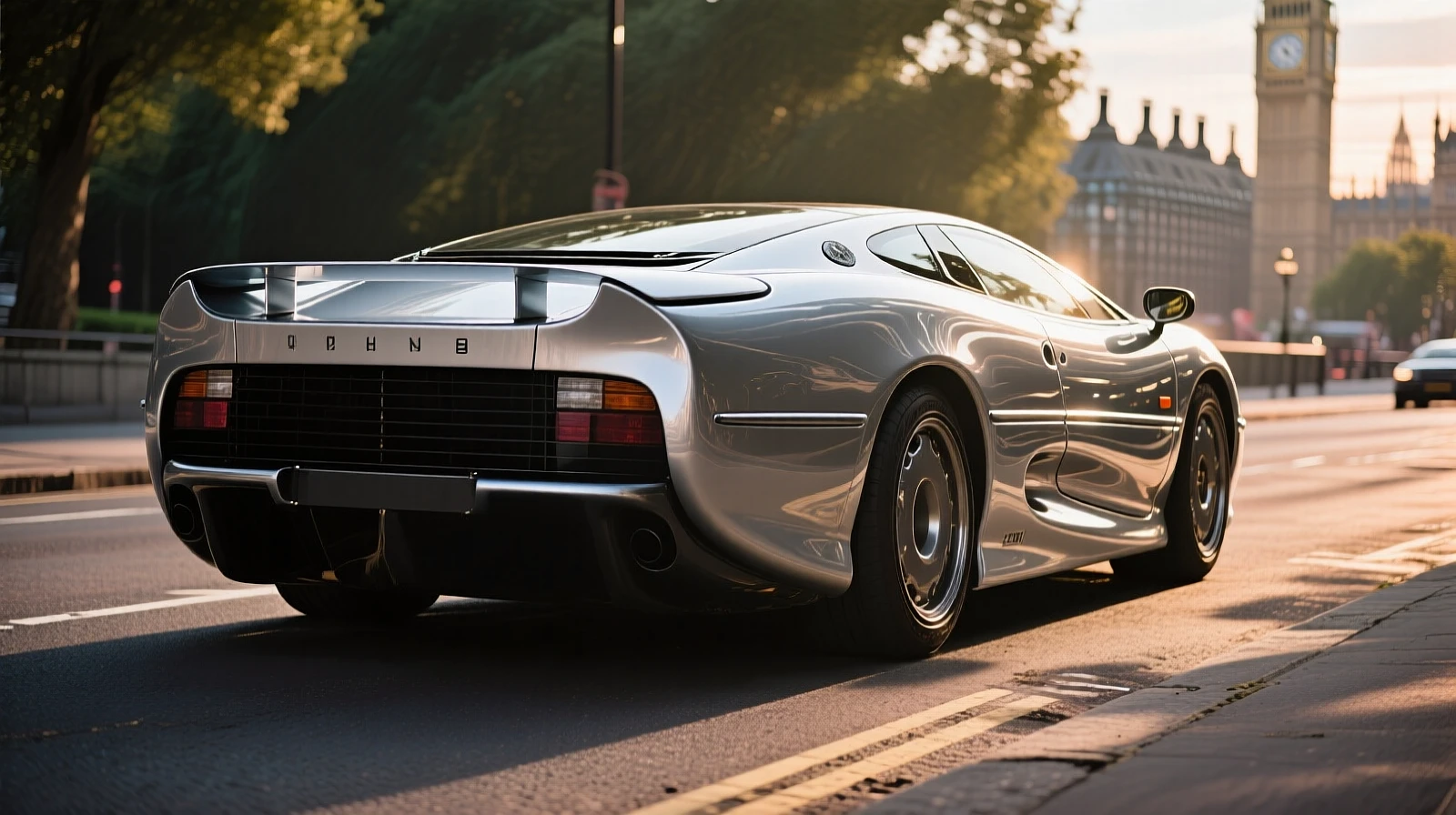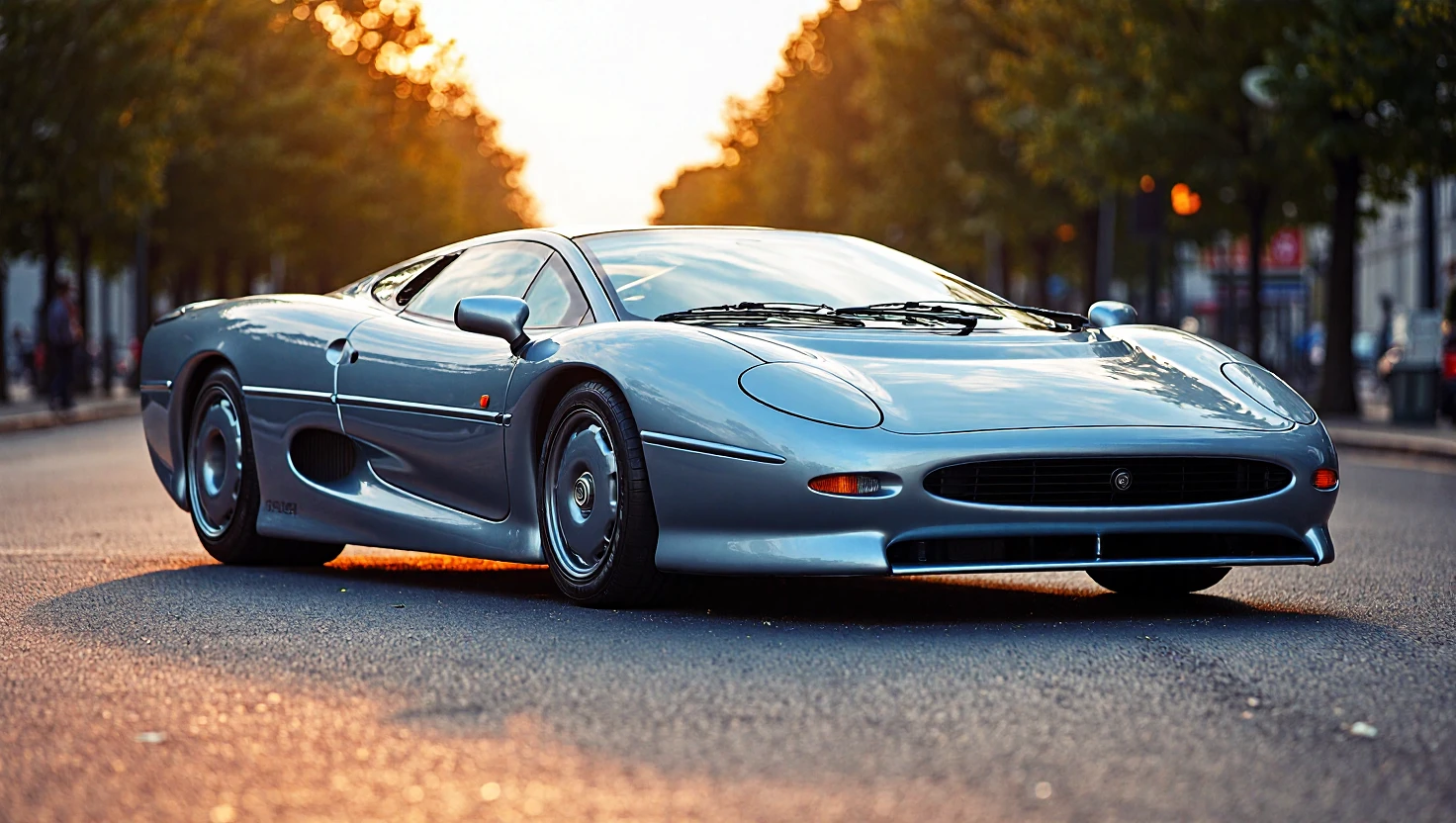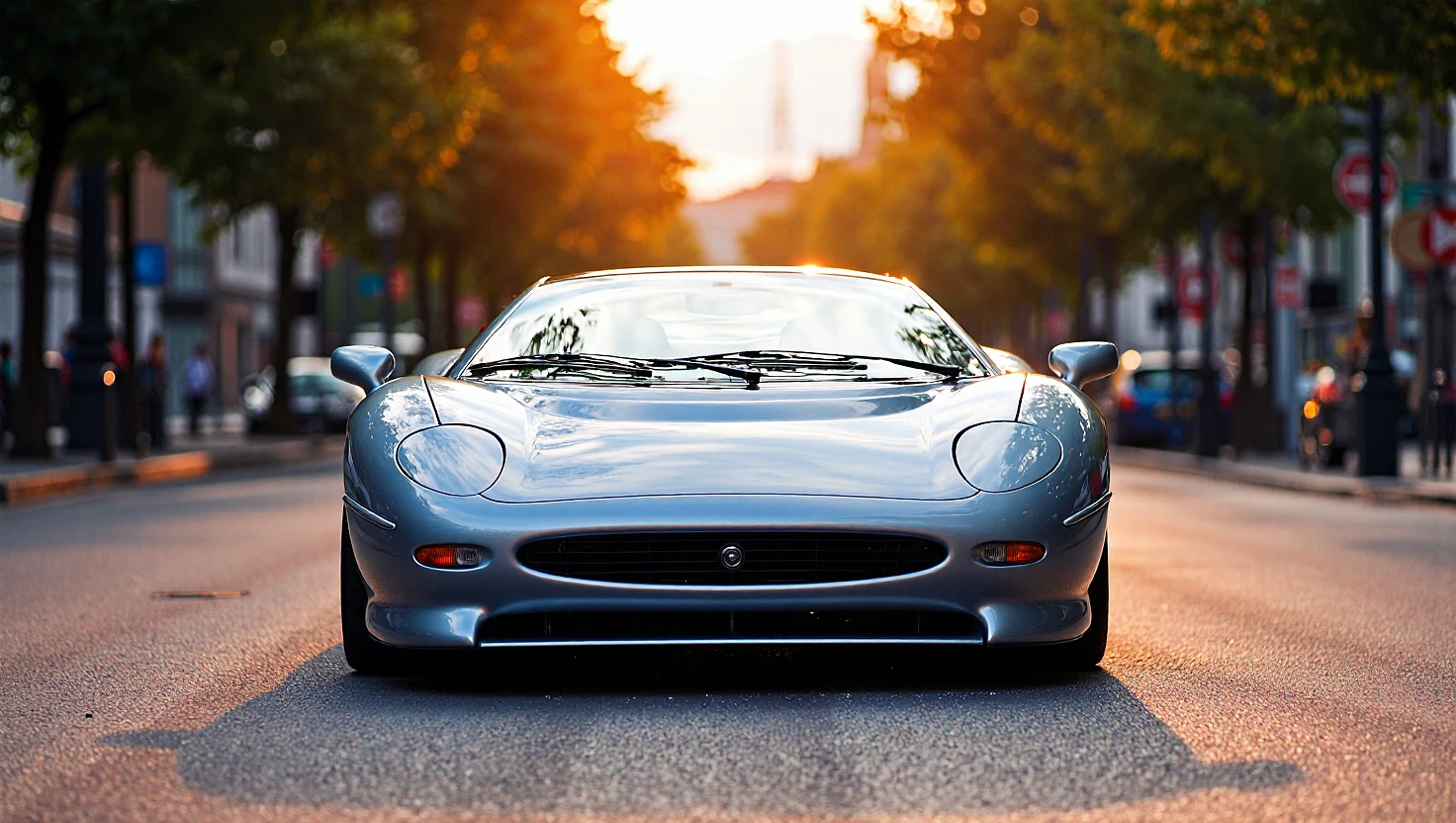From Pariah to Pantheon: The Turbulent Journey of the Jaguar XJ220
The story of the Jaguar XJ220 is one of soaring ambition, bitter compromise, and eventual redemption. It began not in a corporate boardroom, but in the after-hours passion of a dozen volunteer engineers and designers known as the "Saturday Club". Led by Jaguar's Chief Engineer, Jim Randle, this clandestine group dreamed of a spiritual successor to the marque's Le Mans-winning legends. Their creation, a stunning concept unveiled at the 1988 Birmingham Motor Show, was a technological marvel designed to hit 220 mph. It boasted a race-derived 6.2-litre V12 engine, a complex all-wheel-drive system, active aerodynamics, and dramatic scissor doors. The public reaction was euphoric; Jaguar was inundated with around 1,500 deposits of £50,000 each, forcing what was intended as a design exercise into a production reality.
The transition from a no-holds-barred concept to a road-legal production car, a task handed to motorsport partner Tom Walkinshaw Racing (TWR), was fraught with difficulty. The ambitious specifications of the prototype were systematically dismantled in the face of engineering, regulatory, and financial realities. The most controversial change was the heart of the car. The celebrated V12 was abandoned, deemed too large, too heavy, and unable to meet tightening emissions standards. In its place came a 3.5-litre, twin-turbocharged V6. This engine, heavily re-engineered by TWR from a design originally used in the MG Metro 6R4 Group B rally car, was a technical triumph. It was lighter, more compact—allowing the car's wheelbase to be shortened—and, ironically, more powerful, producing 542 hp to the concept's targeted 500 hp.
However, this was just the beginning of the rationalization. The complex all-wheel-drive system was scrapped for a lighter, more conventional rear-wheel-drive layout. The scissor doors, active suspension, four-wheel steering, and active aerodynamics were also removed to reduce weight, complexity, and cost. For the 1,500 deposit holders, the car they were ultimately offered felt like a bait-and-switch. This simmering discontent was ignited by a perfect storm of external factors. The final price had ballooned from an expected £290,000 to an eye-watering £470,000, and the global recession of the early 1990s had completely eviscerated the speculative supercar market. The result was a flood of canceled orders, high-profile lawsuits, and a commercial failure that saw production halted in 1994 after only about 281 of the planned 350 cars were built.
Despite the controversy, the production XJ220 was a formidable machine that delivered on its core promise of speed. At Italy's Nardò test track, it was officially clocked at 212.3 mph in road-legal trim. With its catalytic converters removed and rev limiter raised, it achieved a staggering 217.1 mph, earning it the title of the world's fastest production car from 1992 until the arrival of the McLaren F1. It also set a production car lap record at the Nürburgring of 7:46.36, a benchmark that stood for nearly a decade. The car's racing version, the XJ220C, even won its class at the 1993 24 Hours of Le Mans, only to be heartbreakingly disqualified a month later on a technicality. TWR also created the ultimate iteration, the XJ220S, a road-legal homologation special with carbon fiber bodywork and a V6 tuned to a ferocious 680 hp.
For nearly two decades, the XJ220 was a pariah, an undervalued supercar haunted by its troubled birth, with prices plummeting to a fraction of its original cost. In recent years, however, its legacy has been dramatically reappraised. Collectors now recognize the XJ220 for its immense capabilities, stunning design, rarity, and its significant place in automotive history as Jaguar's only true modern supercar. As the market for analog 1990s supercars has matured, the XJ220's unassisted steering, manual gearbox, and explosive turbocharged power have become highly desirable. Consequently, values have soared, with pristine examples now commanding prices well in excess of the original list price, cementing the XJ220's journey from a flawed compromise to a prized and celebrated icon.
Popularity
Info
Latest version (v1.0 FLUX): 1 File
About this version: v1.0 FLUX
Initial release of the LoRA.
2 Versions
Go ahead and upload yours!





